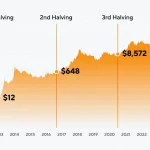Although not a perfect year for the e-commerce giant, Jumia’s financial report for the final quarter of 2020 indicates a steady progress after all.
According to the financial report made available by the e-commerce giant, losses dropped by 34%, thanks to a boost in the company’s Gross Merchandise Volume (GMV) which hit €231m.
Marking a 23% increase from the preceding quarter, the increase in the company’s GMV in Q4 2020 was largely attributed to the Black Friday campaign.
More specifically, the report detailed that at least 41,500 sellers participated in the annual event leading to about 141% growth in item sold.
Also, page views across Jumia page peaked at about 1.5 billion, up by 34% in comparison to the corresponding period in 2019.
More on the success achieved during the Jumia Black Friday – the company further reported that Black Friday’s video content registered almost 100 million views, representing 3x boost compared to that of 2019 event.
During the period, three categories – fashion, beauty and home & lifestyle demonstrated the most performance, raking in most sales.
Most of these successes according to the company were built on the back of the company’s logistic system.
Jumia logistic reportedly handled 4.8 million packages during the BF event, doubling the monthly average for the rest of the year.
It was during the same period that Jumia reached a new milestones of delivery speed; 55% of packages reached consumers in less than 24 hours, compared to 44% in 2019.
Even so, the COVID-19 pandemic had its own toll on the e-commerce business; Year-on-Year revenue recorded during Q4 2020 dipped by 15%.
However, gross profit, on the other hand, increased by 12.5%, further beating overall losses (adjusted EBITDA loss) down to about 47.1% from 53.4m in 2019 to 28.3m in 2020.
X-ray of Jumia’s impressive numbers by sales category
Jumia further broke down its report into bites, sharing further light to specific areas of profitability and losses.
As seen in the infographic illustration below, Jumia experienced growth across major categories including Usage, Payment solution (Jumia Pay), as well as the aspect of Monetization.

Source: Jumia
On the other hand, the e-commerce giant although, gradually approaching profitability still finds itself held back in overall cost efficiency.
ALSO READ: JumiaPay: Everything You Need To Know
“We continued to make significant strides towards breakeven during the fourth quarter of 2020. Gross Profit after Fulfillment expense reached a record €8.4 million during the quarter. “
“In parallel, efficiencies across the full cost structure allowed us to decrease Fulfillment, Sales & Advertising and General & Administrative expenses (excluding share-based compensation) by 18%, 34% and 36% respectively, year-over-year. “
“As a result, Adjusted EBITDA loss contracted by 47% year-over-year, reaching €28.3 million”, Jeremy Hodara and Sacha Poignonnec, Co-Chief Executive Officers of Jumia commented in the report.
Let’s take a closer look at some of the highlight of Jumia’s financial report for Q2 2020;
Increase in active consumer
According to the e-commerce giant financial report, the company witnessed an increase of about 12% in its annual active consumer (AAC).
Knowing that Jumia’s AAC consist of all customers that placed orders on the platform regardless of cancellation or returns; approximately 6.1 million person shopped on the site in 2020.

Source: Jumia
In comparison, the YoY growth of 12% from 6.1m in 2019 to 6.8m in 2020 is weaker than the corresponding year – 2018 to 2019 which saw about 54% growth in its own case.
Reduction in the number of orders
Despite the increase witnessed in terms of active consumer, total orders made on the site dropped by 3% from 8.3 million in 2019 to 8.1 million in 2020.
In its defense, the company attributed the cause of the decline in orders to a 14% decrease in digital services transactions on the Jumia Pay app.
ALSO READ: Holiday Shopping 2020 vs Pre-Holiday Shopping
Also, the company strongly claimed that orders on the platform were rather stable.
In comparison, orders grew by 49% to about 8.3 million orders in 2019 from 5.5 million recorded in 2018, further indicating a shrink growth for the year under review.
Gross Merchandise Volume (GMV) dipped by 21%
According Jumia financial report, overall GMV fell by 21% to stand at €231 million from €292.9 million in 2019.
This decline was, however, attributed to a focus shift from customers’ demand, in this case, from mobile devices i.e smartphones to everyday consumer products i.e groceries, healthcare, and beauty products.
While this trend could be a reflective impact of the pandemic, it has subsequently led to a 19% decreased in the average value of orders from €35.4 during Q4 2019 to €28.7 in Q4, 2020.
Interestingly, there is a positive side to this development; losses per order dropped 46% from €6.5 to €3.5 during the same period.
Jumia’s business mix rebalancing approach paid off
Although there was a lot of high hopes in terms of performance on the path of the e-commerce sector during 2020 as a result of the pandemic, Jumia fell short of majority’s expectation.
However, according to the company co-CEOs, Sacha Poignonnec and Jeremy Hodara, the pandemic did not influence consumer behavior drastically as many predicted in 2020.

Source: Jumia
On the contrary, the company was expecting that the pandemic would negatively impact consumers’ purchasing power.
It was on this note that Jumia drifted to instead focus on essential services, leading to a drastic decline in its overall expenses – a remarkable feat for the company.
Also, regardless of a revenue dip of 12.8% from €160.4m in 2019, to €139.6m 2020, Jumia saw a 22.3% increase in gross profit from 75.9m to 92.8m during the period under review.
Decline in adjusted EBITDA
Firstly, EBITDA represents a company’s earnings before interest, taxes, depreciation, and amortization as the case may be.
For Jumia, the e-commerce giant witnessed a positive trend in its adjusted EBITDA, as company’s losses dropped by 34% representing €119.5m in 2020 from €182.7m in recorded in 2019.
To a large extent, 2020 was a more relieving year for Jumia, considering that the corresponding year – 2019 – saw an increase of about 20% in overall losses instead.
Jumia Pay remains a promising enterprise
On the other hand, Jumia Pay remains a very promising enterprise for the e-commerce giant as gross transaction on the platform increased by 26.1%.
ALSO READ: Hello Spotify: What to Expect from Nigeria Music Streaming Services Amidst Stiff Competition
Similarly, about 58% additional costumers used the payment services for purchases on the platform during the period.

More so, the platform have also witnessed support from the likes of Mastercard who through a strategic partnership invested in the enterprise.
In comparison, the growth experienced on Jumia pay slowed down from 110% in 2019 to 58% in 2020.
Other highlight for Jumia in 2020
The company’s share price skyrocketed past its pre-IPO, thanks to the investment made by Rocket Internet as well as the exit of MTN from the company, yielding a decent return.
Jumia also opened up its logistic services to third-party businesses; it has since processed over 500kg packages for no fewer than 270 corporate clients and SMEs across five countries.
Overall, Jumia is still on the right track towards achieving a profitable financial performance.
Found this interesting? Share!

























 and then
and then